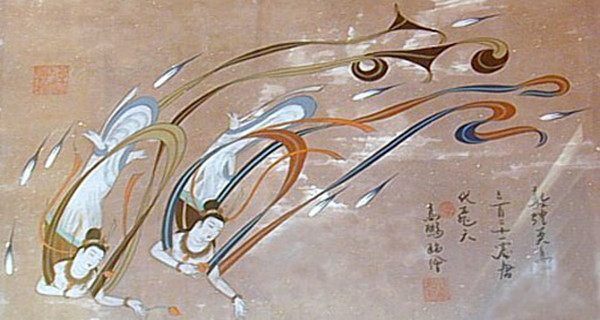Feitian, one of the murals in Chinese temples and grottos, is an imagined flying god, which has been in Western art for a long time. There are stories of flying god in ancient China, such as the myth of Luren and Feitian. However, the art of flying apsaras in Yuangang, Longmen and Dunhung Grottos in China came from India. In Indian mythology, Feitian is said to be a goddess of cloud and water, inhabiting in lake and marsh, and flying pleasantly and freely below bodhi trees. She is also said to be the lover of a God named Jiletian. In Buddhist scripture, Feitian is called the god of heaven song or music, who can play music and sing songs. Moreover, being fragrant, she is also referred to as "Fragrant goddess with sweet voice."

Ancient China's Feitian, like the one in Yungang Grotto, is shaped in a rough and unstrained way, lacking vividness. The figures on it may be male or female. Some of them even have a beard. Obviously, this is affected by alien art. In the flourishing age of the Tang Dynasty, a mural's art got to such a high level that Feitian embodied the national characteristics in Gansu Province. They are almost young girls. Slim in the figure, plump in the face, unstrained in manner and gentle in mood. What deserves our attention most is that Feitian in Dunhuang is bare without wings and feather. A ribbon fluttering elegantly and beautifully, Feitian displays a moving scene that a group of girls are flying and dancing freely in the sky. Some girls are going through clouds and rivers, fruits in hand; some are playing moving and beautiful music. Buddhistic pictures as Feitain is, she vividly reflects that people in ancient time longed for freedom.
To appreciate Feitian is an entertainment of aesthetics.
Source: china virtual tours



